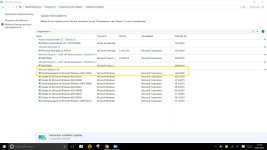- Oct 23, 2012
- 12,527
KB3124263 is the newest cumulative update released by Microsoft for Windows 10 users, but just like its predecessors, it seems to fail to install on a number of computers for no clear reason.
Cumulative updates include all the previously released fixes for Windows 10, so installing the newest one is the best way to remain up to date. But for a number of users, it’s nearly impossible to do that as the installation of Windows 10 cumulative update fails, and no detailed error messages are provided.
This is the case of KB3124263, the company’s latest Windows 10 cumulative update, which does not install on a number of PCs and provides absolutely no information as to what went wrong.
Cumulative updates include all the previously released fixes for Windows 10, so installing the newest one is the best way to remain up to date. But for a number of users, it’s nearly impossible to do that as the installation of Windows 10 cumulative update fails, and no detailed error messages are provided.
This is the case of KB3124263, the company’s latest Windows 10 cumulative update, which does not install on a number of PCs and provides absolutely no information as to what went wrong.
No fix yet
Posts on the Microsoft Community forums confirm the problem, but no pattern has so far been discovered, so it’s not yet known why the update fails to install on some PCs but works smoothly on others.
“Have tried 3x to install Cumulative Update for Windows 10 Version 1511 for x64-based Systems (KB3124263) but after restart tells me it was unable to install but no error code. Have tried with ZoneAlarm off but get the same results,” one of the users whose computer got impacted by the problem explains on the forums.
Pretty much the same thing has happened before too, and unfortunately, there doesn’t seem to be a workaround that could get you install the update.
In absolutely all cases, Microsoft has not re-released the cumulative update and instead preferred to continue working on the next version, which brought the previously released fixes too. Now it’s only just a matter of time until a new cumulative update for Windows 10 is shipped, but it shouldn’t take too long before it lands.
In the meantime, you can simply hide the update completely to avoid being prompted to install it until a fix or the next CU arrives.
